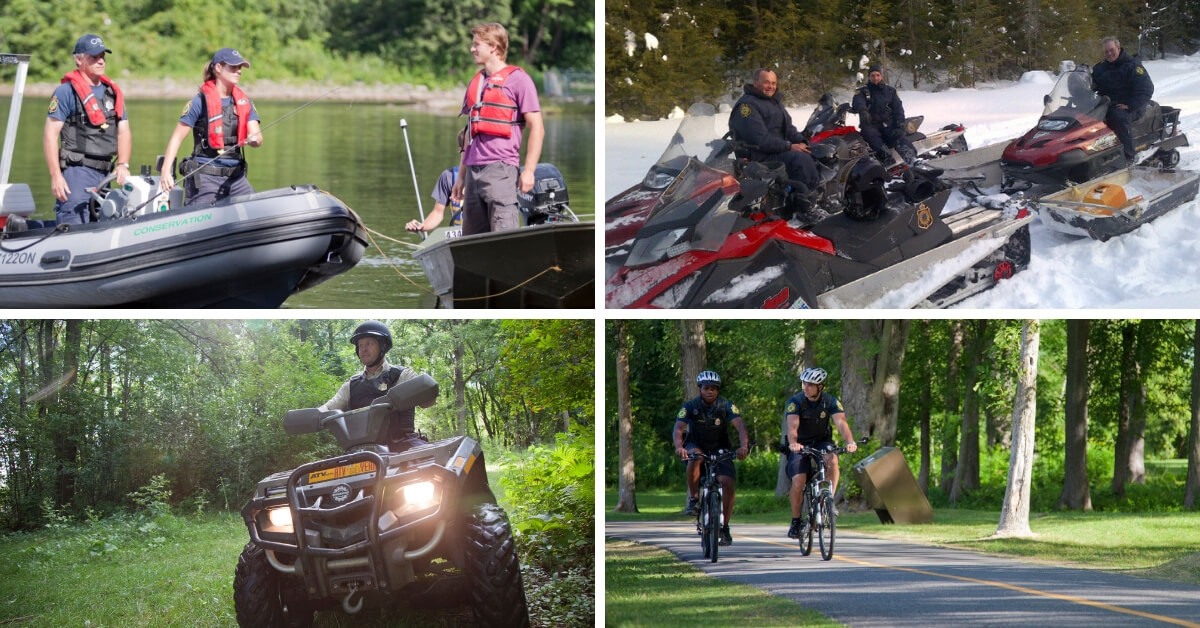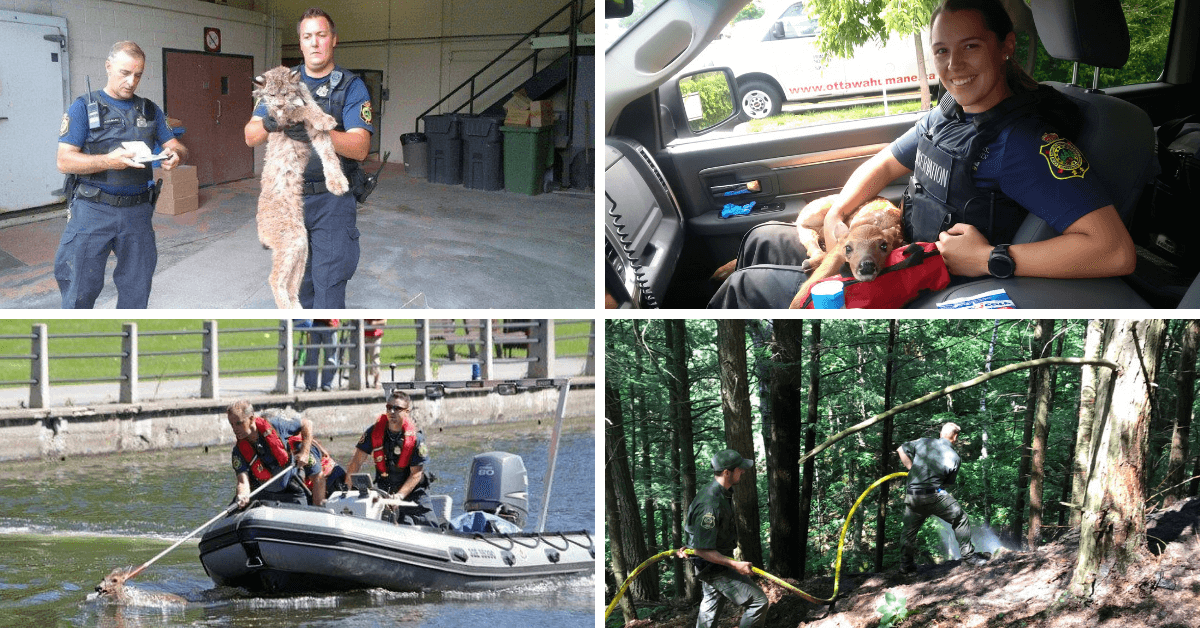Author: Richard Moore, Former Conservation Officer
1,100 square kilometres, 365 days a year, and no two days are alike
For someone who loves nature, and who doesn’t like routine, there is no better job than being a conservation officer at the NCC. We patrol almost 1,100 square kilometres of lands in the National Capital Region.
The purpose of our work is to:
- protect plants and wildlife;
- protect NCC assets and the safe enjoyment by the public;
- ensure compliance with the laws and regulations in force.
So, it’s no surprise that each day is completely different from the day before.
Day-to-day
Whenever possible, we do routine patrols on properties, parks, trails, lakes and rivers on NCC lands to make sure that users are complying with the regulations in force. We do this to protect biodiversity, the habitats and ecosystems of our natural environments and to ensure that these are safe for all to enjoy

Conservation officers work closely with Gatineau Park and Greenbelt biologists in protecting natural resources and managing wildlife, which allows us to take part in a variety of projects. Here are just a few examples:
- monitoring and managing beaver populations
- studying coyote populations using telemetry
- seizing illegally harvested wild leeks, which is a plant species at risk.
Emergency situations
In addition to doing routine patrols, we help out in all types of emergency situations, often teaming up with first responders such as the Société de protection des forêts contre le feu (SOPFEU), municipal fire services, paramedics, police authorities, the Quebec wildlife protection service, the Ministry of Natural Resources and the City of Ottawa.
Because we have been trained by veterinarians, and are certified in chemical immobilization, we are called in to help out when wildlife finds itself in an urban environment or is distressed. In summer 2019, we relocated several bears that had wandered into the urban environment, including the memorable ByWard Market bear.

Another unexpected task we were involved in 2019 and which captured the collective imagination was relocating a family of killdeers that had built a nest where the main stage for Ottawa Bluesfest was to be installed.
Although not usually the subject of great media attention, our work with large mammals is fairly common. When necessary, we have relocated several moose, white-tailed deer and black bears.

We also intervene in emergency situations related to the most common mammal in the National Capital Region: human beings. For instance, we undertake search and rescue with our partners and administer first aid. In 2018, we were first on the scene to extinguish six wildfires in areas of Gatineau Park.
As I look back on my career, the thing I’m most proud of is to be helping to build a greener and more sustainable Capital Region for future generations to enjoy.